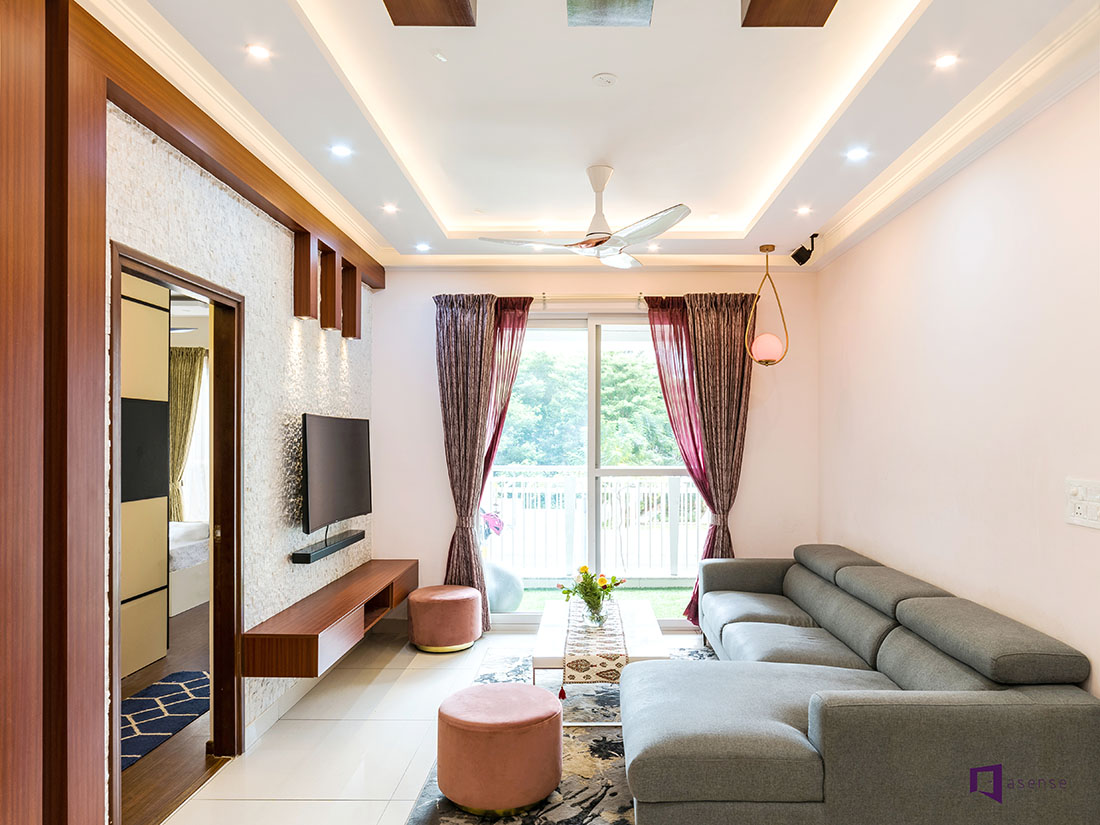Change Your Home With Essential Principles of Interior Decoration and Appearances
By recognizing the impact of color theory and the value of appearance and patterns, one can produce rooms that are not only visually enticing however likewise deeply individual. Attaining this equilibrium involves even more than simple decoration; it incorporates a calculated arrangement and an eager understanding of exactly how each element interacts within an area.
Understanding Shade Theory
Color concept is an essential aspect of indoor design that significantly influences state of mind, understanding, and general aesthetic. Comprehending the principles of shade theory allows designers to develop areas that resonate emotionally with owners while satisfying useful demands (luxury interior design). Shades can be classified into three key types: main, secondary, and tertiary. Each classification plays an important function in establishing harmony within a room.
The emotional impact of colors is profound; cozy tones such as reds and oranges evoke energy and warmth, while trendy tones like blues and greens advertise calmness and serenity. In addition, using complementary colors improves aesthetic interest, developing striking contrasts that can elevate a room's appeal.
Neutral colors, on the other hand, work as a flexible background, enabling other style aspects to radiate. It is necessary to take into consideration variables such as lights and the room's function when selecting a color palette, as these can alter the perception of colors throughout the day.
Ultimately, a well-considered color design can change a room, promoting a sense of convenience and design that straightens with the inhabitants' choices. Proficiency of shade theory is, consequently, an essential ability for any type of interior designer intending to develop unified and welcoming atmospheres.
Accomplishing Equilibrium in Layout
How can developers attain a sense of equilibrium in their spaces? Achieving equilibrium in layout is essential to producing harmonious insides. Designers can utilize 3 main kinds of balance: balanced, asymmetrical, and radial. Balanced balance entails setting up components evenly around a central factor, cultivating a sense of order and tranquility. This kind typically includes pairs of furniture or art work, enhancing aesthetic stability.
Unbalanced balance, on the various other hand, counts on differing elements that still accomplish a natural look. This strategy permits even more dynamic and informal plans, providing passion while maintaining balance. By thoroughly selecting differing sizes, colors, and appearances, designers can produce an aesthetically engaging room that feels well balanced yet energised.
Radial balance highlights a main centerpiece with aspects emitting outside. This design is generally seen in circular designs, where furnishings and design produce a natural surround that draws the eye inward.
Ultimately, accomplishing equilibrium requires thoughtful consideration of scale, proportion, and the relationships between aspects. miami interior design. By skillfully using these equilibrium concepts, developers can change rooms right into environments that feel both aesthetically pleasing and This Site functionally harmonious, improving the general experience for owners
Importance of Spatial Understanding

A keen feeling of spatial recognition permits developers to recognize prime focus within a room, directing the customer's interest to crucial features while preserving an overall sense of unity. It also aids in the tactical placement of lighting, which can drastically affect the perception of space and mood. Furthermore, understanding spatial partnerships enables the designer to cater to the specific demands of inhabitants, ensuring that each location serves its desired purpose without jeopardizing looks.
Eventually, spatial understanding is essential for optimizing the possibility of any type of interior room. By very carefully considering the interaction between dimensions, format, and function, developers can produce environments that not just satisfy practical requirements but additionally stimulate a sense of convenience and beauty, improving the total living experience.
Integrating Texture and Patterns
Welcoming a varied variety luxury interior design of textures and patterns can significantly boost the visual and tactile charm of an indoor area. The strategic use various products-- such as wood, steel, fabric, and rock-- develops depth and passion, making a space really feel more welcoming and vibrant. For example, integrating smooth surfaces with rough appearances can develop a balance that draws the eye and engages the senses.
When including patterns, consider both scale and rep. Large patterns can function as focal factors, while smaller, subtle styles can enhance other aspects without frustrating the space. Layering patterns, such as pairing floral pillows with candy striped tosses, adds complexity and a sense of consistency if performed thoughtfully.
It is also essential to preserve a cohesive color combination, making sure that structures and patterns interact instead of complete for focus. By picking a couple of crucial structures and patterns, you can produce a combined aesthetic that shows your individual style while enhancing the total setting of the space. Eventually, the careful consolidation of these aspects can change a mundane space into an advanced setting rich with character and heat.
Customizing Your Area
Creating a room that shows your character is important to achieving an absolutely welcoming environment. Customization in indoor layout allows you to infuse your unique design and interests right into your home, changing it from a plain sanctuary right into a sanctuary that talks with who you are. Begin by selecting a shade scheme that reverberates with your emotions-- vibrant shades can invigorate, while soft tones provide tranquility.
Integrate artwork and style that show your interests, whether it be travel, nature, or abstract principles. Showing individual collections, such as publications, photographs, or keepsakes, can stimulate cherished memories and produce centerpieces within a room. In addition, think about customizing useful pieces, like upholstered furniture, to align with your visual preferences.

Verdict
To conclude, the improvement of a home with the vital concepts of interior design and appearance necessitates a my explanation detailed understanding of color theory, equilibrium, spatial understanding, appearance, and customization. Each element contributes substantially to developing a harmonious and functional living atmosphere - luxury interior design. By thoughtfully integrating these principles, individuals can improve the visual charm and psychological vibration of their rooms, inevitably cultivating a home that mirrors unique identifications while giving convenience and usefulness